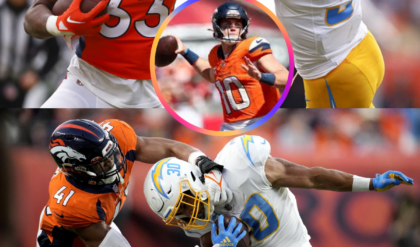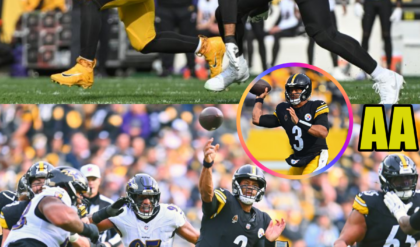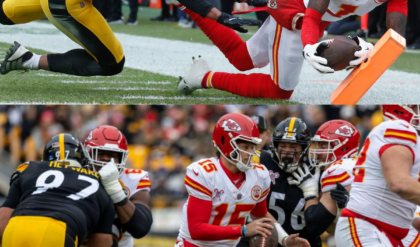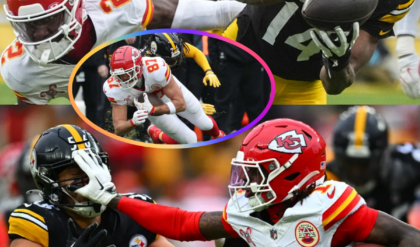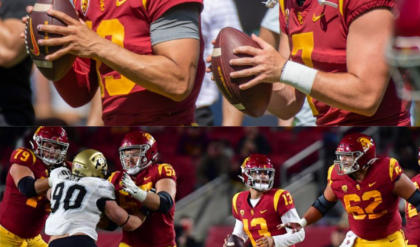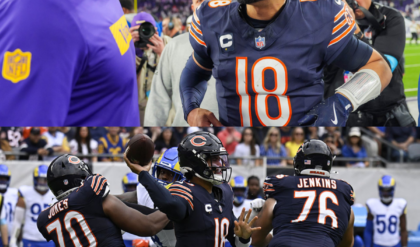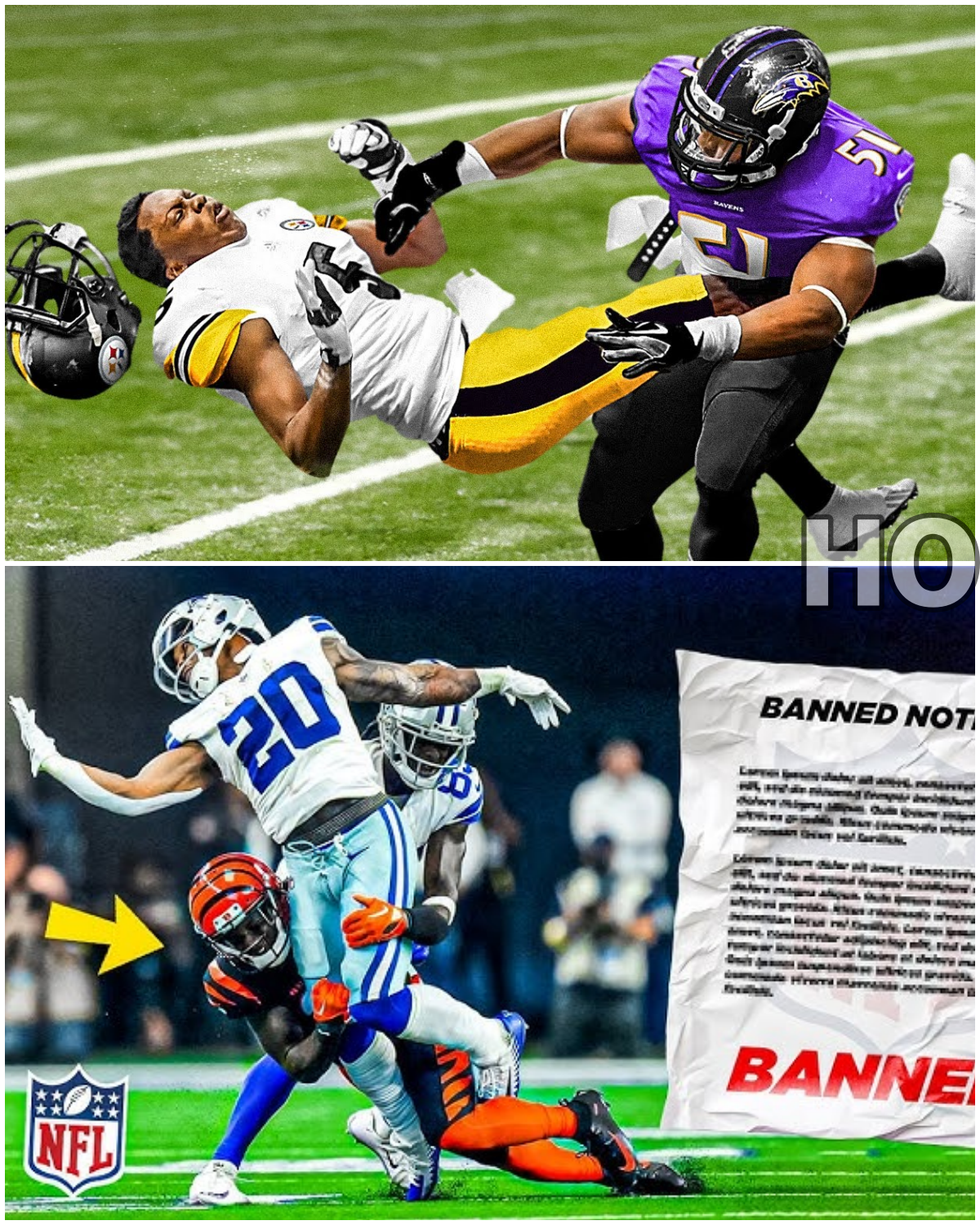
The NFL has evolved over the years, and what was once considered normal on the field would now be unthinkable. From brutal tackles to mind-bending strategies, many of the wildest plays in NFL history were banned for player safety, fairness, or simply because they were too dangerous or unfair. Let’s take a look at some of the craziest plays that were once allowed, but now live only in NFL lore.
Horse Collar Tackle: The Roy Williams Rule
One of the most infamous plays in NFL history is the horse collar tackle, a move that was once commonplace but banned after several injuries and one particularly shocking incident. The technique involved grabbing a player by the inside collar of the back or shoulder pads and yanking them down, often leading to severe injuries. Roy Williams, a safety for the Dallas Cowboys, was notorious for using this move, and it led to one of the most devastating plays in NFL history.
In 2004, Williams’ tackle on Terrell Owens not only injured the star receiver but also caused him to miss the final two regular season games and the first two playoff games with a broken leg and torn ankle ligaments. Following this, the league passed the Roy Williams Rule, officially banning the horse collar tackle in 2005. But even before Williams, players like Joey Browner had been using this tactic, which was already a cause for concern. Now, it’s defined as grabbing the inside collar of the back or side of the shoulder pads or jersey and pulling the runner down.
Head Slap: Deacon Jones’ Iconic Move
The head slap was a move that was, frankly, brutal but effective. Deacon Jones, a Hall of Fame defensive lineman, popularized the move, using it to disorient offensive linemen and break through the line for sacks. Jones himself described the move as “a dance step”—a punch or slap to the head of the opponent to leave them dazed and easy to get past. The technique was legal throughout the 1960s and early 1970s, but when Jones retired in 1974, the NFL re-evaluated the rules. By 1977, the head slap was outlawed, but not before leaving its mark on the league.
Imagine being hit in the head repeatedly by a 6’5”, 272-pound monster like Jones—an injury risk that couldn’t be ignored. The head slap, while effective for Jones, caused permanent damage to players and was eventually banned to protect the safety of offensive linemen.
Jumping the Line: Troy Polamalu’s Signature Move
Jumping the line—or leaping over the offensive line to disrupt plays—was a move famously executed by Pittsburgh Steelers safety Troy Polamalu. Polamalu’s timing was so perfect that he could jump over the line and make a play on the ball before the quarterback even had a chance to react. This move became more popular over the years, especially in attempts to block field goals.
However, in 2017, the NFL officially banned jumping the line, citing safety concerns for both the defensive player and the offensive linemen. Polamalu’s risky yet spectacular move, while thrilling to watch, was deemed too dangerous to continue.
Bill Belichick’s Delay of Game Trickery
In a classic case of a coach outsmarting the system, Bill Belichick found a way to manipulate the clock in a game against the New York Jets in 2019. The Patriots were leading 33-0 with over 10 minutes left in the fourth quarter when Belichick used a loophole in the rulebook. He instructed his team to take back-to-back penalties—first a delay of game and then a false start—allowing the clock to continue running while taking valuable time off the clock. The league quickly updated the rules in 2020, preventing teams from manipulating the clock in this manner. Belichick’s cleverness was met with both admiration and a swift rule change to keep it from happening again.
Wedge Block: A Dangerous Strategy
The wedge block was a tactic used on kickoff returns, where two or more players would form a wall to clear a path for the ball carrier. While effective, it often led to violent collisions, resulting in a large number of concussions and injuries. In 2009, the NFL banned the wedge block to protect player safety. Prior to the ban, almost every team used the wedge at some point during the season. The league had no choice but to eliminate it after a rise in injuries and permanent damage caused by these collisions.
Hip Drop Tackle: A 2024 Ban
In a more recent development, the hip drop tackle became the focus of controversy after Logan Wilson’s tackle on Mark Andrews in 2023 resulted in a significant injury. Andrews was sidelined for eight weeks after suffering a knee injury from the move. The hip drop involves a tackler grabbing the runner and using their hips to force them down while trapping the legs. This tackle was banned in 2024, with a penalty of 15 yards and an automatic first down for any illegal attempt. While the intent is to protect players, defenders will now have to adjust their tackling techniques to avoid penalties.
Crackback Blocks: A Defenseless Target
The crackback block was once a common but dangerous tactic used by offensive players to block a defender coming from the opposite direction. These blocks often targeted a defender’s blind side and resulted in serious injuries, leading to the ban of this play in 2012. JuJu Smith-Schuster’s notorious crackback block on Vontaze Burfict in 2017 epitomized the kind of hits that led to the rule change. Although players like Smith-Schuster may still be remembered for their crackback blocks, such hits are now illegal and have been penalized as personal fouls in recent seasons.
The Stroud Rule: The Giant Tight End Who Defied Physics
In 1969, 6’10” Morris Stroud, a tight end for the Kansas City Chiefs, became an overnight sensation for his ability to block field goals. Stroud, with his height and wingspan, would sit under the goalposts and jump to deflect kicks like a basketball center defending the rim. The NFL quickly took action, and the move became known as the Stroud Rule, effectively banning players from attempting to block field goals using such a method. Despite this, players like Randall Cobb have tried similar tactics in more recent years, but Stroud’s unique skill set was enough to forever change the rules.
The Holy Roller: A Fumble Turned Touchdown
One of the most famous illegal plays in NFL history was the Holy Roller, a fumble that turned into a touchdown for the Oakland Raiders in 1978. In the dying seconds of the game, quarterback Ken Stabler fumbled the ball forward, where his teammate Pete Banaszak knocked it further before Dave Casper recovered it and ran for a touchdown, leading to a last-second victory over the Chargers. The NFL responded by changing the rules, making it so that only the player who fumbled the ball could advance it on a fourth down or after the 2-minute warning. The Holy Roller rule was born from this game to close the loophole.
Punching a Loose Ball: A Controversial Play
While punching a loose ball isn’t officially banned, it remains one of the most commonly missed calls by referees. The rule states that players cannot bat or punch a loose ball towards the opponent’s goal line, especially in the end zone, where any illegal bat results in a penalty. One of the most famous examples of this play happened during the 2015 NFC Championship Game between the Seahawks and the Packers, when K.J. Wright’s punch of the ball sealed a win for Seattle. This rule remains one of the most controversial in the NFL, as referees often miss the call or make the wrong decision.
Fake Slide: Breaking the Rules
In 2004, Michael Vick stunned the NFL by pulling off a fake slide during a game against the Panthers. This move involved Vick pretending to slide to avoid a tackle, only to get up and continue running. The league quickly took action after players like Kenny Pickett used the fake slide in college, leading to a rule change banning it in NCAA football. However, it remains legal in the NFL, leading to some controversy when players like Josh Allen have used the move to gain an advantage.
Clothline Tackle: A Holdover from the Past
Finally, the clothesline tackle—famously used by Dick Night Train Lane—is still technically legal in the NFL, even though it is often penalized. While striking a player in the neck or head is illegal, the basic clothesline tackle, where a defender grabs an offensive player around the neck, is still within the bounds of the rulebook. As long as the tackle isn’t excessively violent, it is considered a legal move. It’s hard to believe that something so reminiscent of a professional wrestling maneuver is still allowed in the game today!
The NFL’s evolution has been defined by the constant push and pull between safety and innovation. While some of these banned plays are just a distant memory, they remind us how far the league has come—and how much further it might go as players continue to push the boundaries of what’s possible on the field.
